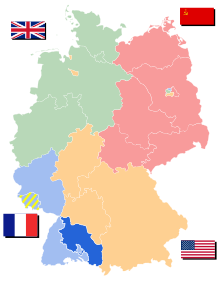Württemberg-Hohenzollern
Württemberg-Hohenzollern
State of West Germany
Württemberg-Hohenzollern (French: Wurtemberg-Hohenzollern [vyʁtɑ̃bɛʁɡ‿ɔɑ̃zɔlɛʁn]) was a West German state created in 1945 as part of the French post-World War II occupation zone. Its capital was Tübingen. In 1952, it was merged into the newly founded state of Baden-Württemberg.
This article needs additional citations for verification. (March 2023) |


